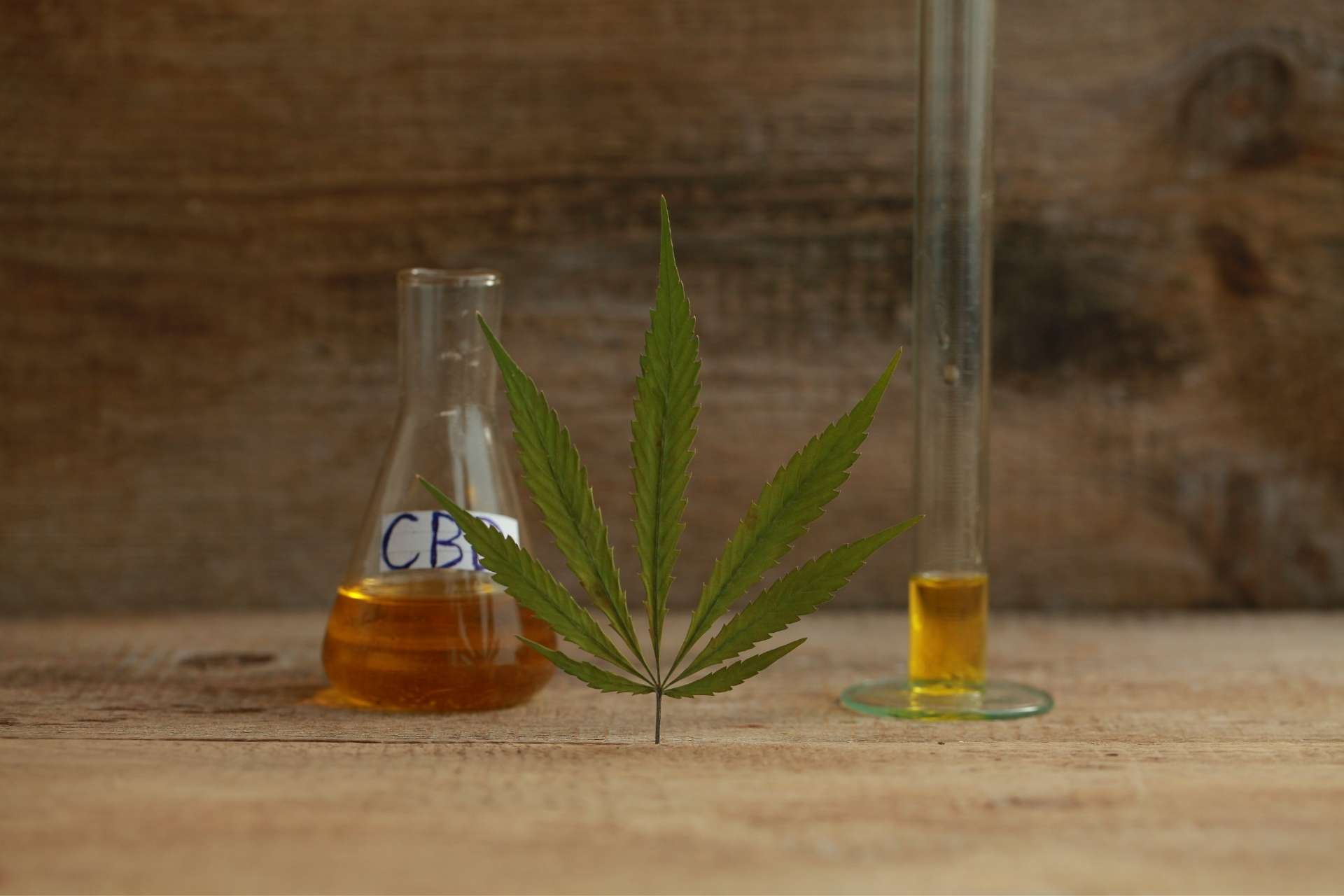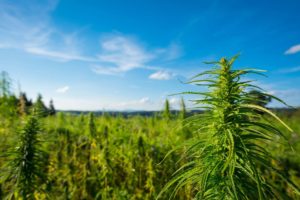Sommaire
How to make cbd oil
A complete and simplified guide to making CBD oil
Home > CBD Oil
Have you ever wondered why most cannabinoid products you see on the market are oil-based? The reason for this is simple: most of the active and beneficial cannabinoid compounds found in cannabis and hemp plants do not mix well with water. Instead, chemical compounds such as THC and cannabidiol (CBD), both of which have been lauded for their immense potential health benefits, bind well to the oil.
Of course, that doesn’t mean you can’t enjoy the benefits of CBD in water. However, CBD oils are much more common. And getting to know their production process can be a great way to really understand
View other CBD flower topics
Why should you learn how to make CBD oil?
Ongoing research strongly suggests that CBD has immense health benefits. At some point, we all get sick. Or, if not, we know someone close to us who has a chronic condition with no known cure. Fortunately, many current studies on cannabinoids show that they can be used to mitigate or even completely combat the effects of certain conditions.
With the rising cost of medical care, a trend that doesn’t seem to be changing anytime soon, why not learn how to makeCBD oil in the comfort of your own home? You will enjoy all the health benefits of CBD and learn a valuable skill! Again, this article is meant to help you understand CBD and how it is made. This article is not intended to instruct, but to educate.
Not sure if CBD oil is right for you? Here’s the thing. If you suffer from any of the ailments listed below, studies suggest that CBD oil may be beneficial:
- Chronic pain in the neck, back or joints
- Migraines
- Increased anxiety and stress
- Cancer
- Dementia and Alzheimer’s disease
- Muscle inflammation
- high blood pressure
Worried about the challenges of making your own CBD oil? We’re not going to lie to you: it’s not the easiest process in the world. However, the use and retail sale of hemp and CBD products is now fully legal in the United States and is starting in France. So, if you have access to high quality hemp flowers , that means you can create your own CBD oil and even make CBD infused products.
Want to know the best part of this idea? CBD oil is an organic product, and by making it yourself, you will have the peace of mind that no harmful additives are used in the preparation process. Keep in mind that not all manufacturers make high quality CBD products. Unfortunately, in order to make higher profits, some CBD oil manufacturers cut corners in the preparation process, putting you at risk for health complications.
What are the main ingredients used to prepare CBD oil?
CBD oil is mainly prepared from hemp flowers. When preparing cannabinoid oil, you should choose the main ingredient according to your needs.
If you are looking for an oil concentrate that contains little or no THC, and more cannabidiol, use hemp flowers. Remember that THC is the psychoactive cannabinoid compound that makes you feel high. Hemp flowers contain only traces of THC, which means they produce a more potent CBD oil concentrate.
If you are looking for a full spectrum oil containing cannabidiol as well as a more concentrated level of THC, you can use cannabis buds but this is prohibited in France. Marijuana contains high amounts of THC and other cannabinoids.
When choosing a primary ingredient for your CBD oil, you should also check if that ingredient is legal. You don’t want to get in trouble with the authorities because you started experimenting with CBD oil.
How is CBD oil prepared?
There are several ways to extract cannabinoids from cannabis and hemp plants. They include:
- The use of carbon dioxide
- Use of alcoholic solvents
- Use of oil
Some of these methods, such as using carbon dioxide, only work if you have sophisticated and expensive equipment. This means that they are more likely to be used in an industrial or commercial setting.
For the purposes of this article, however, we will focus on simple and inexpensive techniques you can apply to make CBD oil and handle yourself.
Step-by-step guide on how to make CBD oil at home
Before you try any of the recipes below, you need to make sure you have well-preserved hemp flowers or cannabis buds. Ideally, the raw ingredients should have a high concentration of cannabinoid compounds. Focus on using organically grown plants that have not been exposed to contaminants or farmland with unknown soil. Remember, the more concentrated the cannabinoid compounds are, the more potent your final product will be.
You should also make sure you have all the supplies you will need for the preparation process. While they will vary depending on your method of preparation, there are some universal supplies that are needed for almost every CBD oil recipe. These include:
- A slow cooker
- A water bath (you can use a makeshift model)
- A glass bowl
- A fine sieve
- Hemp
- Parchment paper
- A thermometer
- A container with a lid to store your CBD oil once the preparation process is complete.
It should also be noted that the main step in the preparation process is to use just enough heat. Using excessive heat in the preparation process can kill some cannabinoid compounds and make your oil less potent. It also goes without saying that all preparation materials must be clean to ensure the purity of the final product.
Recipe 1: Making CBD oil from coconut oil
- First cut the hemp flowers or cannabis buds into small pieces and place them on a baking sheet. Place the baking sheet in a preheated oven at 130 degrees, and bake for about 27 minutes. This is the part of the process known as decarboxylation, where we allow the cannabinoid compounds to come to the forefront of your bud or flower.
- Next, place water at the base of your water bath. Add 1 cup of coconut oil to the top level of your double boiler, letting it melt gently.
- Once the oil has melted, add about 10 grams of hemp.
- Continue to heat the mixture of coconut oil and your main ingredient on low heat for up to an hour, stirring the mixture occasionally. Use the thermometer to ensure that the temperature of the mixture does not exceed 90 degrees.
- After an hour, cover your strainer and gently filter the mixture until no oil remains. Remember, be careful: the mixture will be hot.
- You can then transfer your CBD oil to a storage container and cap the lid tightly.
- Store your oil in a cool, dark place.
Recipe 2: Making CBD oil from olive oil
- First, add your hemp flowers or cannabis buds in a simple pot. Add water to cover the main ingredient.
- Then slowly heat the mixture for about 10 minutes, using your lowest setting.
- Remove your flowers and put them on a sieve, letting the water evaporate naturally.
- Repeat the above three procedures until the water in the mixture you are heating is no longer coloured.
- You should then remove the main ingredient and place it back on a strainer (letting the water drain naturally). Once this step is complete, place your dried ingredient on an unscented paper towel so that all the water is filtered out.
- Now place the dry ingredient in the top part of a double boiler, then add olive oil to cover it.
- Add water to the lower part of your water bath.
- Heat the water bath for a few hours, keeping the mixture at 100 degrees Celsius.
- After about 3 hours, remove the mixture from the heat and strain the oil.
- Store your CBD oil in a cool, dark place.
And there you have it: two simple recipes to make your own CBD oil. All in the comfort of your own home. It’s a challenge to create our formulation, which is why you should experiment with CBD until you find what you like best. It takes time, and you should enjoy your CBD discovery.

How to consume CBD oil?
L’
CBD oil
house does not have a long shelf life, so it should be consumed within a year. Keep in mind that if you don’t store CBD oil properly, the shelf life will be shortened.
Ideally, you should consume CBD oil in its original state. If used in cooking, the heat will eventually kill the cannabinoids in the oil. However, to get the most out of this oil, you can use it to flavour salads or use your tongue to flavour. Additionally, at the right temperature, you can also use CBD oil to make a variety of baked CBD candies.
Not interested in consuming your CBD oil? Try applying hemp oil topically to relieve muscle pain! You can also add CBD oil to creams or other lotions to get more benefits.
What dosage should you take?
It is difficult to say exactly what dosage of homemade CBD oil you should consume. Indeed, the potency of each batch of drugs will vary depending on the purity of the preparation process and the concentration of cannabinoids in the main ingredients used. You can send CBD for testing, but it can be expensive for home cannabis growers.
Ideally, you should start with a low dose to assess the potency and effectiveness of the oil. Your body will tell you the ideal dose of CBD oil to consume. Be consistent and patient, as it may take you some time to recognize what your body is telling you, and for some people it may be instantaneous.
Other topics CBD oil
Discover
CBD oil benefit
You can find many online suppliers who ship high quality CBD products to France. However, there are some… Read more
CBD Oil Pharmacy
Cannabidiol (CBD) is becoming more prevalent, and pharmacists need to be familiar with these products in order to effectively counsel patients. In France, the laws and… Read more
How to use CBD oil?
Have you ever wondered how to use CBD oil? How much should I take? When should I take it? We’ve created a guide to help you find out how… Read more
CBD oil review
The first is to ensure that the plants do not absorb any of the potentially harmful chemicals that may be in the soil. The other is the amount of the two key compounds … Read more
CBD Massage Oil
I walked into a massage parlor hopeful but a little dubious about the de-stressing benefits promised by her CBD massage, a supplement to… Read more
How to make CBD oil
Have you ever wondered why most cannabinoid products you see on the market are oil-based? The reason is simple… Read more

